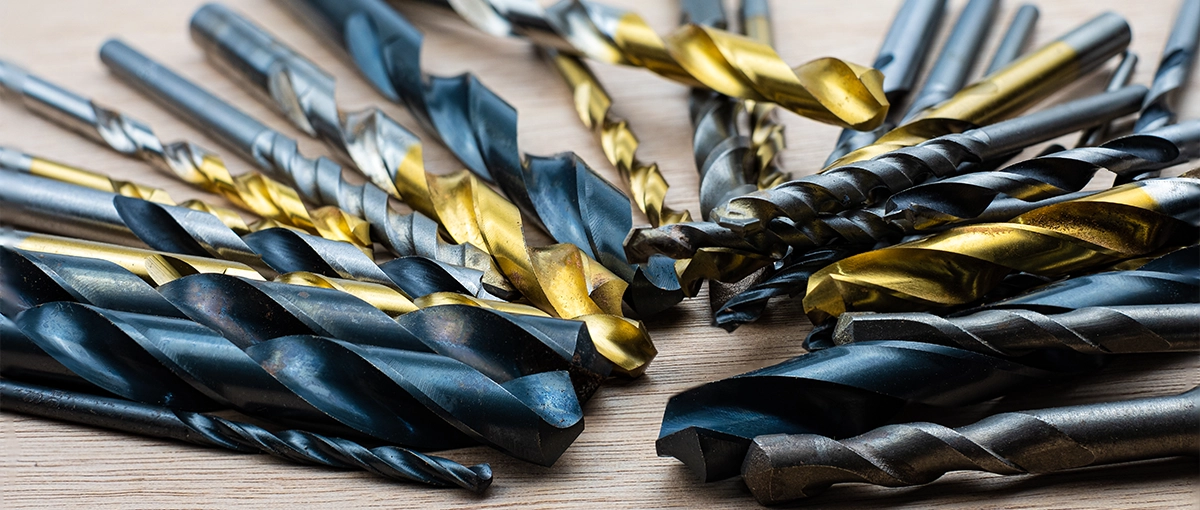Best Practices for Maintaining Cutting Tools for Longevity

Maintaining cutting tools properly isn’t just about keeping production running smoothly—it’s also about ensuring you get the best value from your equipment. Tools like saw blades, drill bits, and milling cutters are significant investments, and improper care can shorten their life, reduce efficiency, and lead to poor-quality work. Here’s a practical guide to help keep your cutting tools in top condition for as long as possible.
Choose the Right Tool for the Job
One of the most common reasons for premature wear is using a tool for applications it wasn’t designed to handle. Every cutting tool has its limits in terms of material, feed rates, and operational speed. When these boundaries are exceeded, wear and tear accelerate.
Practical Tips:
- Match the tool to the material. For instance, carbide-tipped blades are better suited for hardwood and metal, while high-speed steel works well for plastics and softer woods.
- Check the manufacturer’s specifications for speed and feed rates to avoid overstressing the tool.
Keep Cutting Edges Sharp
Dull tools don’t just deliver poor results—they also increase strain on your equipment, requiring more power to complete a cut. This excess force can damage both the tool and the machinery.
Sharpening Best Practices:
- Use a professional sharpening service or invest in proper sharpening equipment for your specific tools.
- Regularly inspect cutting edges and address dullness immediately. Small nicks or worn edges are easier to fix than heavily degraded tools.
Clean Tools After Use
Built-up material, resin, and debris can corrode and damage cutting tools if not removed promptly. Dirty tools are more likely to gum up during use, leading to uneven cuts and accelerated wear.
How to Clean Effectively:
- Use a gentle solvent to remove resin and adhesives from the blade or bit.
- Avoid abrasive cleaning methods, as they can scratch or weaken the tool.
- Dry tools thoroughly after cleaning to prevent rust formation.
Store Tools Properly
Improper storage can cause tools to chip, corrode, or become dull. Tools left exposed to moisture are particularly vulnerable to rust, which can render them useless.
Storage Suggestions:
- Store cutting tools in protective cases or designated racks that prevent contact with other tools.
- Keep storage areas dry and climate-controlled to avoid corrosion.
- Label tools clearly to prevent improper use or misplacement.
Lubricate During Use
Friction generates heat, which is one of the leading causes of cutting tool degradation. Lubrication minimizes this problem by reducing friction and keeping the tool cool.
Using Lubrication Correctly:
- Select the appropriate lubricant for your material. For example, cutting oils are ideal for metal, while water-based lubricants work well for plastics.
- Apply lubricants consistently but sparingly to avoid messes that can attract debris.
Monitor Tool Wear
Tools don’t fail without warning. Regular inspections allow you to catch wear patterns early and replace or service tools before they cause problems.
Inspection Routine:
- Check for chips, cracks, or dull edges at the end of each shift.
- Use magnification for precision tools to spot subtle wear.
- Track performance over time. If a tool suddenly requires more force or produces rough cuts, it’s time for maintenance.
Avoid Overheating
Excessive heat weakens cutting edges and can lead to warping or micro-cracks in the tool. Overheating often results from running tools too fast or applying too much pressure during cuts.
How to Control Heat:
- Use proper cutting speeds as recommended by the tool’s manufacturer.
- Pause during extended cuts to allow the tool to cool naturally.
- Employ coolants where appropriate, especially when working with metals.
Calibrate Machines Regularly
Even the best-maintained cutting tool will fail prematurely if the machinery it’s used with isn’t calibrated correctly. Misalignment or imbalance creates uneven stress on the tool, leading to breakage or rapid wear.
Maintenance Checklist for Machines:
- Check spindle alignment and ensure that all components are properly tightened.
- Test feed mechanisms to confirm smooth and consistent movement.
- Inspect bearings and replace them as needed to prevent wobble or vibration.
Train Operators Thoroughly
No tool maintenance program is effective without properly trained operators. Workers who understand how to handle and care for cutting tools can significantly extend their lifespan.
Key Training Areas:
- Emphasize the importance of cleaning, storage, and inspections.
- Teach operators to recognize signs of wear and report them promptly.
- Provide refresher courses whenever new tools or equipment are introduced.
Invest in High-Quality Tools
While it’s tempting to cut costs by purchasing cheaper tools, lower-quality options often wear out faster and perform poorly. Investing in higher-grade tools can save money over time by reducing replacements and enhancing efficiency.
What to Look For:
- Materials that match your workload. For example, titanium-coated tools often last longer than standard steel in demanding environments.
- Reputable brands that offer warranties or service support.
Why Proper Maintenance Matters
Cutting tools are vital assets in industrial operations, and their maintenance directly impacts efficiency and costs. By following these best practices, you’ll not only extend the life of your tools but also improve the quality of your work, reduce downtime, and lower long-term expenses. Regular attention to detail and a focus on care can make all the difference in keeping your tools ready for the demands of daily use.


